White strands on dark hair: who suits and what dyeing techniques exist?

Every woman always wants to look perfect and unique. To achieve the perfect look, it is not enough to change your outfit and do a new make-up. The main factors influencing the style of a fashionista are hair color and hairstyle shape. Frequent use of chemical dye formulations has a negative effect on the hair structure and its condition. To reduce the negative effects of chemistry on curls, stylists recommend using coloring of individual strands.

Who is it suitable for?
Highlighting is a unique technology for dyeing hair, which makes it possible to change the style only by dyeing individual curls. Lightening individual strands on dark hair not only radically changes the image, but also makes it possible to visually add volume and splendor to the hairstyle.
Before using this procedure, stylists recommend that you carefully study its positive and negative sides.



Advantages:
- correction of flaws in appearance and hairstyle;
- painting over gray curls;
- minimal chemical effect on the hair structure and hair follicle;
- giving the hairstyle pomp and airiness;
- creating a unique image;
- the ability to use for women of any age;
- quick changes to the created image;
- the possibility of long-term non-use of coloring compositions.

Disadvantages:
- the impossibility of coloring after a perm and painting with henna or basma;
- applying paint only to absolutely healthy strands;
- the need for preliminary hair improvement.



Owners of a triangular face should choose warm and gentle red tones.
For women with oval and oblong facial features, it is better to lighten the curls located in front.
Stylists distinguish the following hair colors, the strands of which can be lightened:
- light blond and gold - gentle and warm curls;
- dark blond (platinum) - cold contrasting shades;
- red, deep light brown - warm and contrasting tones;
- light brown - cold and soft strands;
- chestnut - copper, cognac and gold curls;
- black - copper, coffee and light blond tones.
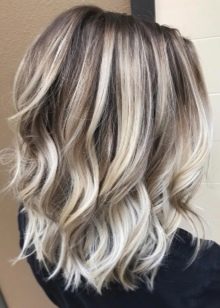

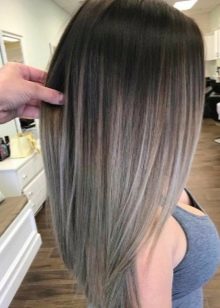
Stylists recommend that brown-haired women and brunettes dye only the ends of their hair in light brown, gold or copper. Long blonde strands will help to effectively emphasize the geometry of dark hair. It is not recommended to carry out coloring of strands for women of fashion with chocolate skin and brown eyes.


Types of staining
Before you start dyeing the strands, you need to carefully study the various methods of this process, which directly depend on the length of the hair.
Owners of short haircuts can use the following technologies.
- Saturated strands - a method that provides for the initial dyeing of the selected hair in a white shade, followed by toning in a contrasting color of several curls. The most popular colors for this procedure are pink, purple and red.
- Volume highlighting - a method that involves the imposition of dark strands on bleached curls. With this method, you can significantly increase the volume of your hairstyle.
- Two tones - the use of two shades, contrasting with each other and the main color.
- Feathers - a method that provides for the creation of even white lines on dark and short hair. Experts do not recommend using this coloring for tall and very slender women with elongated facial features.


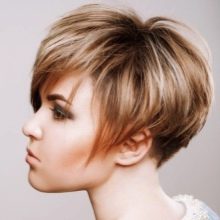
For women with medium to long hairstyles, you can use a few types of coloring.
- Venetian - dyeing curls with a shade that is at least two tones lighter than the main color. Using this method, you can create sun glare on long and curly strands.
- California - simultaneous use of five shades that complement each other harmoniously.
- Brazilian - simultaneous coloring with at least 3 shades, the color of which becomes lighter closer to the ends. This method is used for gray hair.

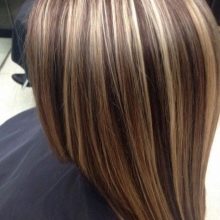

Basic techniques
Professional hairdressers use several leading strand dyeing techniques.
- Classical technique - the most popular type of lightening curls, which involves uniform coloring of the strands over the entire surface of the head. Depending on the stylistic idea, curls can be located very rarely or densely, and also be of different lengths.

- Zonal - partial lightening of hair in one specific area. The most common areas for this type of staining are the facial area and the back of the head, but there may be others. Some fashionistas, after lightening the strands, carry out the glazing procedure, which gives these areas a special shine.
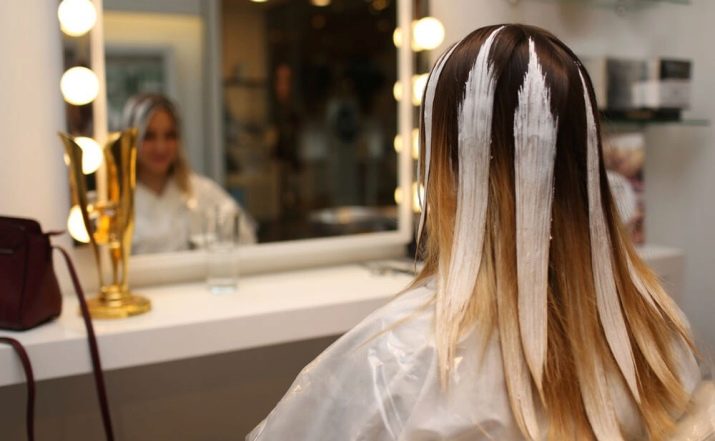
- Feedback - an unusual procedure that involves dyeing the strands in a darker shade, but natural hair acts as light curls. This method makes the hairstyle brighter and more unusual.

- Traditional - a standard type of highlighting, which has similar features to the classical method. Repeated use of this technology will allow for a smooth transition from a natural dark shade to a lighter one.
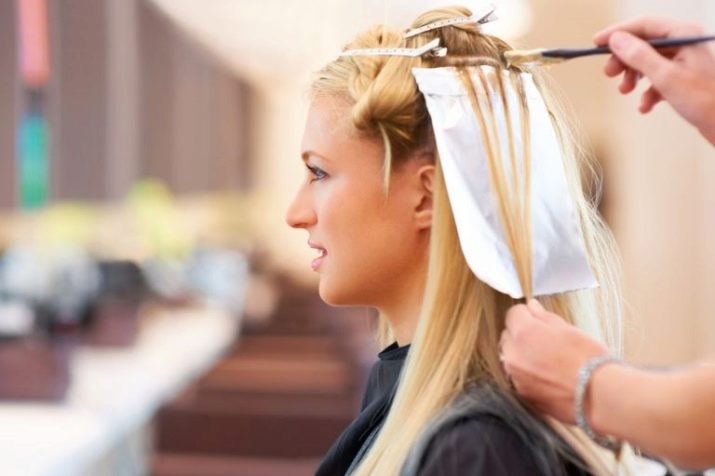
How to do it yourself?
Create a unique image using this type of staining, there are several ways:
- hair bands;
- silicone cap;
- foil;
- comb.

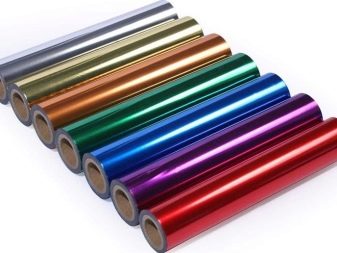
The process of dyeing curls with hair bands is performed in the following sequence:
- thorough combing of hair;
- distribution of strands into the required number of zones and fixation with elastic bands;
- covering the shoulder area with a special hairdressing cape;
- preparation of the coloring composition;
- applying paint to selected strands;
- waiting for a certain amount of time;
- rinsing off the product with plenty of water using a special shampoo.


Owners of short and medium hair need to pay attention to the technology of dyeing curls with the help of a hairdresser's silicone cap. It consists of the following steps:
- combing and styling hair with a hair dryer;
- fixing the rubber cap on the head;
- pulling out strands with a special hook into selected holes;
- applying a coloring agent;
- waiting for the specified amount of time;
- removing the cap and washing the head thoroughly.

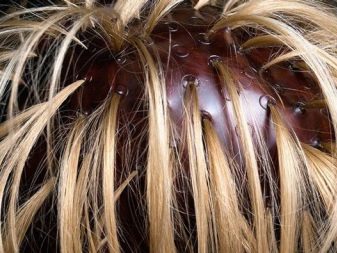
The most common hair coloring method among professional hairdressers is highlighting with food foil. This process requires not only knowledge, but also professional experience, and is performed in the following sequence:
- division of hair into special zones with the initial separation of the parietal area;
- fixation of hair in the lateral and occipital zones;
- fixing all partings made with special clamps;
- preparation of a coloring agent;
- applying paint to the curls of the parietal area with a preliminary lining of the required amount of foil;
- re-staining curls along the entire length;
- closing and fixing foil sheets;
- repetition of the procedure on all strands;
- waiting for the required amount of time, removing the foil and thoroughly washing your hair.

A simple and affordable way to lighten individual curls is to dye them with a comb. This procedure must be carried out in the following sequence:
- hair straightening along the entire length;
- applying paint with a brush on a special comb;
- even distribution of the composition
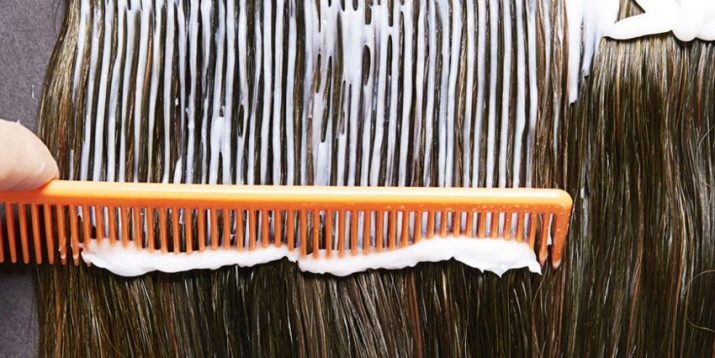
Care features
In order for the hairstyle to remain beautiful and attractive for a long time, and the hair to be strong and healthy, experts recommend paying increased attention to the colored strands. Among the main activities for the care of a hairstyle, the following can be distinguished:
- constant use of nourishing balms and conditioners;
- applying moisturizing masks based on olive and almond oil;
- using only special shampoos for highlighted hair;
- weekly use of revitalizing masks;
- combing hair only after partial drying;
- minimal use of thermal agents for drying and styling.

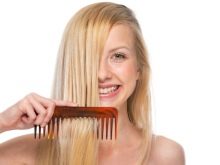

Experts recommend starting the coloring procedure only 3 months after using henna, basma and perm.
In order for the process of caring for curls not to cause a lot of trouble and difficulties, stylists advise choosing the right coloring formulations. Fundamental rules:
- using only non-expired funds;
- use of paints with a minimum amount of ammonia;
- checking the packaging for integrity and tightness;
- purchase of goods of the middle price category.


Trying to preserve the hair structure as much as possible, experts do not recommend completely abandoning ammonia. Gentle paints do not give the desired color and are quickly washed off.
To prevent the appearance of allergic rashes and redness, it is better to conduct a trial test before applying the composition to the hair.
For this procedure, you need to apply a small amount of the product to the back of the wrist and rinse off the composition after a few minutes. Only in the absence of rashes, you can start the procedure.


For a step-by-step master class on hair highlighting, see below.








